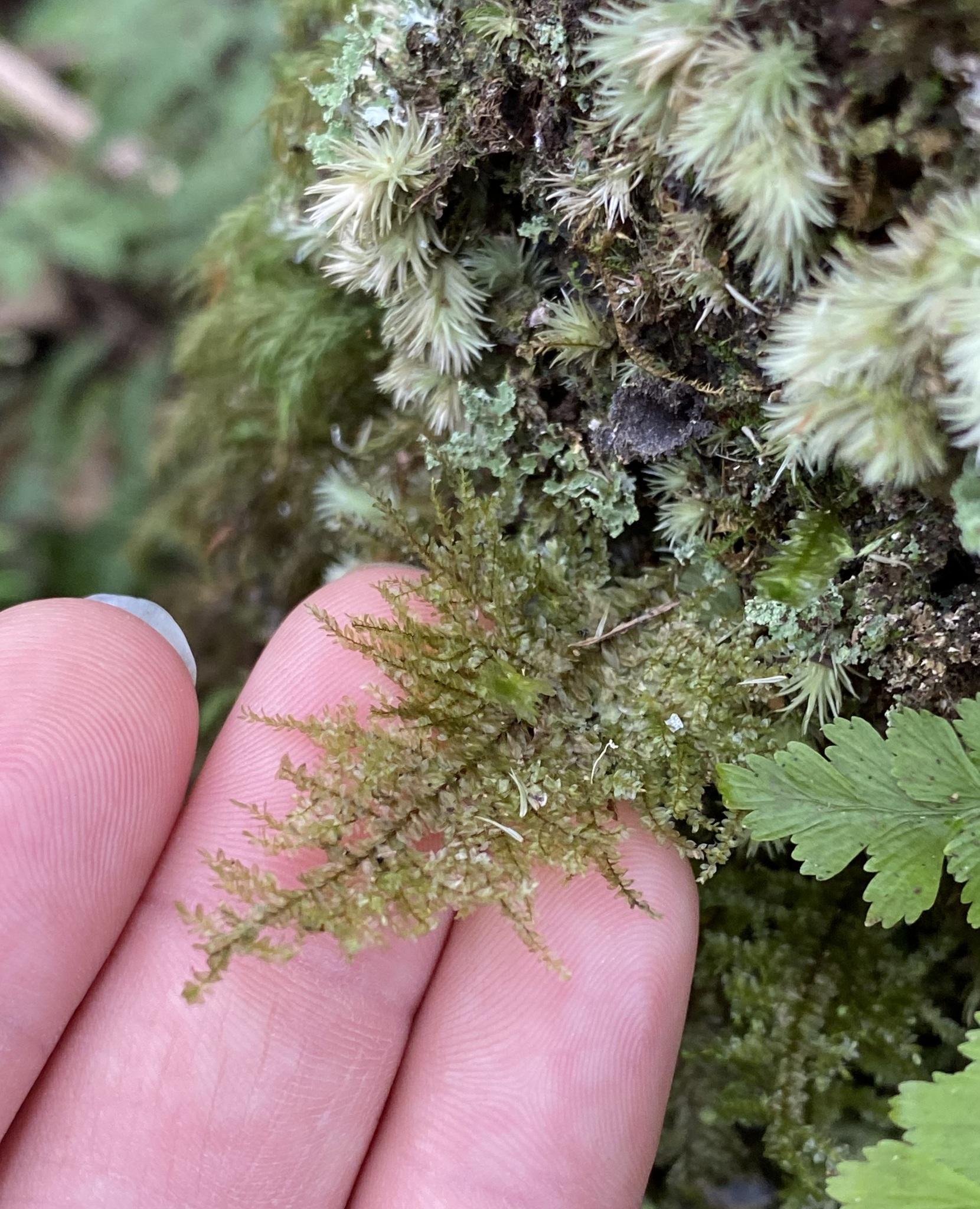
Homaliodendron+piniforme+blog_5267.jpg from: https://moveclim.blogspot.com/2013/06/preliminary-bryological-results-from-la.html
Exploring the Fascinating World of Homaliodendron ligulaefolium Moss
Introduction
Mosses are often overlooked, but they play crucial roles in ecosystems around the world. One particularly interesting species is Homaliodendron ligulaefolium (Mitt.) Fleisch., also known simply as

large.jpg from: https://www.inaturalist.org/observations/172105437
Homaliodendron. This moss belongs to the Neckeraceae family and has some unique characteristics. Let’s take a closer look at this fascinating bryophyte.
Background on Mosses
Mosses are non-vascular plants in the division Bryophyta

Mosses-and-Liverworts.jpg from: https://www.scotlandguides.org/mosses-and-liverworts-in-scotland.html
. Unlike other plants, they lack true roots, stems, and leaves. Instead, they have leaf-like structures called phyllids. Mosses reproduce via spores rather than seeds and are found in a wide range of habitats worldwide, from arctic tundra to tropical rainforests. There are over 12,000 species of moss described by science.
Morphology and Identification
H. ligulaefolium forms loose mats with a glossy appearance. The stems are creeping to ascending and irregularly branched. The phyllids are complanate (flattened into one plane), oblong-ligulate in shape, and have a rounded to obtuse apex. They are 1.5-2.5 mm long. The costa (midrib) is short and double. Capsules are rare, ovoid-cylindric, and borne on a seta 8-12 mm long.
Global Distribution and Habitat

00ae422930c03355c1279e7d3670b688.jpg from: https://taieol.tw/muse/digi_object/5c288503a07b98ea98b8f1ea8f885b55
This species is widely distributed in tropical and subtropical regions of Asia, Africa, Australia, and Oceania. It grows on tree trunks, branches, and rocks in moist forests from lowlands to 2,400 m in elevation. H. ligulaefolium prefers partial shade and high humidity.
Ecological Roles and Adaptations
Like other mosses, Homaliodendron plays important roles in its forest ecosystems:
- Helps retain moisture and prevent erosion
- Provides habitat for micro-organisms and small invertebrates
- Involved in nutrient cycling and carbon storage
The complanate growth form is an adaptation that maximizes light capture in shaded forest understories. The glossy surface may help reflect light and shed water.

medium.jpeg from: https://www.inaturalist.org/taxa/556630-Homaliodendron-microdendron

original.jpg from: https://www.gbif.org/es/species/2678510

7ce5231ecc8b0bc6696eb8cffeb247ab.jpg from: https://taieol.tw/pages/35013

ea7206ba122db72b76d537660cb640f1.jpg from: https://openmuseum.tw/muse/digi_object/dd18a1d727ae9348b279c46e3323b4a5
| Characteristic | Description |
|---|---|
| Family | Neckeraceae |
| Growth form | Loose mats |
| Stem | Creeping to ascending, irregularly branched |
| Phyllids | Complanate, oblong-ligulate, 1.5-2.5 mm long, short double costa |
| Capsule | Rare, ovoid-cylindric, seta 8-12 mm long |
| Habitat | Tree trunks, branches, rocks in moist forests |
| Elevation range | 0-2,400 m |
| Distribution | Tropical and subtropical Asia, Africa, Australia, Oceania |
Conclusion
Homaliodendron ligulaefolium is a prime example of how even tiny mosses can be quite interesting when you take a closer look. Its unique morphology and ecological roles make it a fascinating subject for botanists and bryologists. Next time you’re walking through a tropical forest, take a moment to appreciate the intricate world of mosses living all around you. What other amazing bryophyte adaptations might you discover?